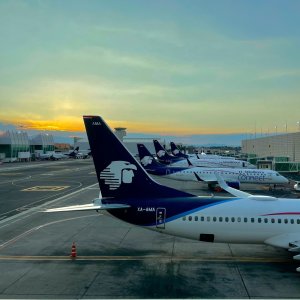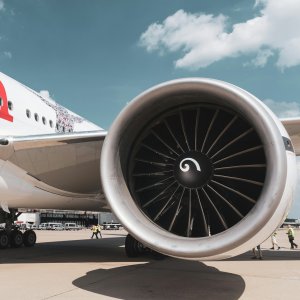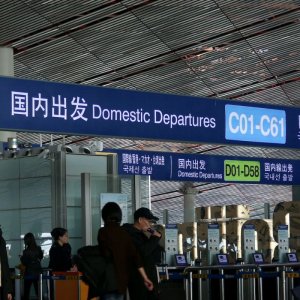
Tourism's Light Shines over Mexico
A strong promotion strategy and attractive destinations helped Mexico regain its Top 10 ranking as a tourism magnate in the last few years but a greater investment is required to maintain its momentum. “To continue growing the way we have been growing, we need to have really good infrastructure, such as roads and airports,” says Gerardo Murray, Vice President of Brands and Marketing for Mexico, Latin America and the Caribbean at IHG. “Despite the many differences that might exist between the public and private sectors, the strategic vision is set. We know what we need to do.”
Globally, 1.33 billion people traveled internationally in 2017, which is a 7 percent increase over the previous year, according to UNWTO’s Tourism Highlights 2018 report. Europe was by far the most popular international destination, followed by Asia-Pacific and the Americas. These tourists generated total revenue of US$1.34 trillion in 2017, according to the report, which marks a 5 percent increase over the previous year. Europe’s success is based on tourists traveling within their own region. However, emerging economies in Latin America, Africa, Eastern Europe and the Middle East are growing their tourism sector thanks to increased disposable income, according to UNWTO.
The Americas were third in international visitors in 2017, which amounted to 211 million passengers, and in tourist expenditure, which represented approximately US$326 billion. Of those that came to the Americas, 62.5 percent chose North America as their preferred destination, with the region showing a 4.2 percent increase in arrivals between 2016 and 2017.
THE MEXICO EXPERIENCE
Mexico is among the main beneficiaries of this uptick in travel, capitalizing on its beautiful beaches, archeology, welcoming culture, picturesque towns and diverse communities to develop a strong tourism arm, which helped the country become the sixth-most visited destination in the world in 2017. The tourism sector contributed a total of 17.2 percent to the country’s GDP, for a total of US$209.4 billion in direct and indirect activities in 2018, according to the World Travel & Tourism Council (WTTC). In 2018, Mexico was visited by 41.45 million tourists, according to the Ministry of Tourism (SECTUR), spending a total of US$22.51 billion. This represents a 5.5 percent increase in direct expenditure, according to INEGI. The sector generated 4.19 million jobs that represented 8.6 percent of the national employment, SECTUR data show.
Of the total tourists Mexico received in 2018, 18.08 million traveled near the US-Mexico border, with 15.38 million tourists crossing by car and the rest by foot. The other 23.37 million traveled to the rest of the country, 19.37 million of them by air and the rest by land, according to SECTUR. Most of Mexico’s international tourists arrive from the US and Canada, following the siren call to a beach destination. “Mexico is very good at offering its beach and sun destinations, which tend to attract several nationalities, such as US and Canadian visitors,” says Murray. However, there are increasing efforts to attract visitors from other parts of the world. China, Germany and the UK, which are the first, third and fourth-largest tourism spenders according to UNWTO, could be attractive targets. But to do so it is necessary to revamp Mexico’s image as more than a beach destination. “Diversifying the tourism offering to include cultural options allows Mexico to promote itself in markets with higher purchasing power, such as Japan,” Murray adds.
Efforts to promote the country continue to bear fruit. In 2019, Mexico is expected to welcome 43.60 million international tourists, a 5.2 percent increase over the year before, according to SECTUR. Their expenditure is also expected to rise: the ministry foresees a 5.2 percent increase for a total of US$23.68 billion. The industry credits strong government promotion as a factor for its continued success. “Part of the great success Mexico has experienced is a result of the appropriate development of public policies. Marketing campaigns extolling Mexico as a tourist destination are very well-focused,” said Javier López, Vice President of North America Operations at AccorHotels.
While the sector posted positive results in previous years, some are worried about a potential slowdown caused by less international promotion. President López Obrador’s decision to close the Council of Mexico’s Tourism Promotion (CPTM), was greeted with concern from former SECTUR directors and industry representatives. Enrique de la Madrid, Minister of Tourism from 2015 to 2018, told media in March 2019 that “if we remove investment in tourism promotion, the number of tourists coming to Mexico will drop.” The President of the National Tourism Business Council (CNET), Pablo Azcárraga, also criticized the lack of promotion, which he claims is already hurting companies and could cost the country MX$20 billion (US$1.06 billion) by 2024.
FINDING A MARKET WITHIN Mexico’s diverse towns, cities and beaches are also attractive destinations for locals. In 2017, 235 million national tourists traveled throughout Mexico, mainly to Mexico City, Acapulco, Guadalajara, Cancun, Veracruz and Puebla, according to the Integral System of Information of Tourism Markets (SIIMT). Mexicans are increasingly investing in tourism as the number of local tourists has grown steadily since 2012.
For Mexicans tourists, hotels are not the first choice for accommodations when traveling. Only 39 percent booked a reservation and the rest chose alternative housing, such as a second home, a time share or a relative’s house. SIIMT also indicates that, on average, local tourists spend MX$6,281 (US$331) on a vacation, including transport and housing. Their average vacation lasts five days and 41 percent prefer to travel by car. Considering this number, many in the industry argue for better road infrastructure to strengthen national tourism. “It is not only necessary to improve airports but also highways. An interesting example is the construction of the highway between Durango and Mazatlan, which has completely changed the city, increasing the influx of people visiting from the center of the country,” says López. “This is the type of infrastructure that needs significant government investment.”
Tourism by sea is a less common but powerful force in the sector. Mexico received 7.86 million cruise tourists, a 7.6 percent growth over the previous year, according to Miguel Turruco Márquez, Minister of Tourism. Of those, 75.9 percent visited the Gulf of Mexico and the rest traveled through the Pacific. The most visited destinations were Cozumel and Mahahual in Quintana Roo, Ensenada in Baja California and Cabo San Lucas in Baja California Sur. There is still room for growth in this segment but that also requires infrastructure. “A base port would allow more cruises to depart and arrive in Mexico and would greatly contribute to creating more jobs in the sector. We also need better infrastructure, with more ports along the Mexican coasts. Improved security for our travelers, both national and international, is also a must,” says Sara Gómez-Ortigoza, Director General of MSC Cruceros Mexico.
AMLO’S TOURISM BET
The most ambitious tourism project targets much more than attracting visitors; its goal is to be an engine for economic development in the southeast of the country. The Mayan Train, a railroad that will connect the 11 main archeological regions of five different states, is among the largest infrastructure projects supported by President López Obrador’s administration. The project is expected to take over four years of construction and cost between US$6 billion and US$8 billion, financed by public and private institutions.
While extremely ambitious, the project has generated concern due to its high costs and potential environmental impact. Moreover, some question whether it is the best choice to improve mobility in the region. “We cannot talk about the Mayan Train without talking about the current needs of Cancun and the Riviera Maya. There are other infrastructure projects that could be carried out to improve mobility or services in the region, such as a train between Cancun and Bacalar or a bridge that crosses the Nichupte Lagoon to improve mobility in Cancun,” says Ricardo Schondube, Managing Partner of Schondube Abogados.
















